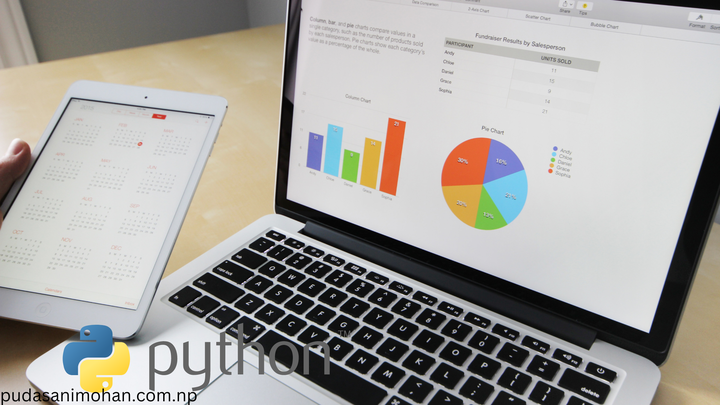Importance of Python in Data Science: A Overview of its Role and Advantages
Importance of Python in Data Science: A Overview of its Role and Advantages

Python is a high-level, open-source programming language with a wide range of applications, including web development, data analysis, machine learning, and deep learning. It was created in 1991 by Guido van Rossum and is maintained by the Python Software Foundation. Python is considered an essential tool for data scientists and engineers due to its simplicity, versatility, and large community, as well as its numerous libraries and tools that make it ideal for data science tasks. The language is easy to read and write, highly extensible, and has a wealth of resources available, making it a great choice for both beginners and experienced programmers alike. This article will explore the many advantages that make Python an essential language in data science.
Easy to Learn:
Python is widely recognized for its simple and intuitive syntax, which makes it a great language for beginners to learn. The syntax of Python is designed in a way that it is easy to understand and follow, even for those who are new to programming. It does not require a deep understanding of computer science concepts to get started, which allows individuals to focus on learning the basics of programming without getting bogged down by complex syntax or concepts. This simplicity and ease of use is one of the reasons why Python is a popular choice for introductory programming courses.
Versatile:
Python is a versatile programming language that is used in a wide range of fields, including web development, scientific computing, artificial intelligence, and more. This versatility makes Python a valuable language for those who are looking to work in different areas of computer science or explore various fields. The large library of modules and frameworks available in Python, as well as its ability to interact with other languages, makes it a versatile choice for many different types of projects.
High Demand:
Python is in high demand in the job market, particularly in fields such as data science, machine learning, and artificial intelligence. Many companies are looking for individuals who are skilled in Python, making it a valuable language to know for those who are looking to advance their careers. The demand for Python is expected to continue to grow, as more and more companies adopt data science and artificial intelligence technologies.
Large Community:
Python has a large and active community of users, developers, and enthusiasts who are constantly creating and sharing new tools, libraries, and resources. This community provides a wealth of resources for learning and troubleshooting, making it easy for beginners to get help and support when needed. The community also provides opportunities for collaboration and networking, making it a great place for individuals to grow their skills and build their careers.
Data Analysis:
Python is equipped with a variety of libraries and tools that make it easy to perform data analysis tasks, such as data cleaning, transforming, and aggregating. Some of the popular libraries for data analysis in Python include NumPy, Pandas, and Matplotlib. These libraries allow data scientists to perform complex data analysis tasks with ease, making it a great choice for data science projects.
Data Visualization:
Data visualization is an important aspect of data science, and Python offers a range of libraries for creating high-quality visualizations. Some of the popular libraries for data visualization in Python include Matplotlib, Seaborn, and Plotly. These libraries make it easy to create visualizations that help communicate insights and make data more accessible to a wider audience.
Machine Learning:
Python has a rich ecosystem of libraries for machine learning, which makes it a popular choice for building machine learning models. Some of the popular libraries for machine learning in Python include scikit-learn, TensorFlow, and PyTorch. These libraries provide a range of tools for training and evaluating machine learning models, as well as for tasks such as feature selection, hyperparameter tuning, and model deployment.
Deep Learning:
Deep learning is a subfield of machine learning that deals with building models that can learn and make decisions based on large amounts of data. Python has a range of libraries for deep learning, including TensorFlow, PyTorch, and Keras, which make it easy to build and train deep learning models. These libraries provide a range of tools and resources for building complex deep learning models, making Python a great choice for deep learning projects. In conclusion, Python plays a crucial role in data science and is an essential tool for data scientists and engineers. Its user-friendly syntax, versatility, and extensive libraries make it a popular choice for tasks such as data analysis, data visualization, machine learning, and deep learning.